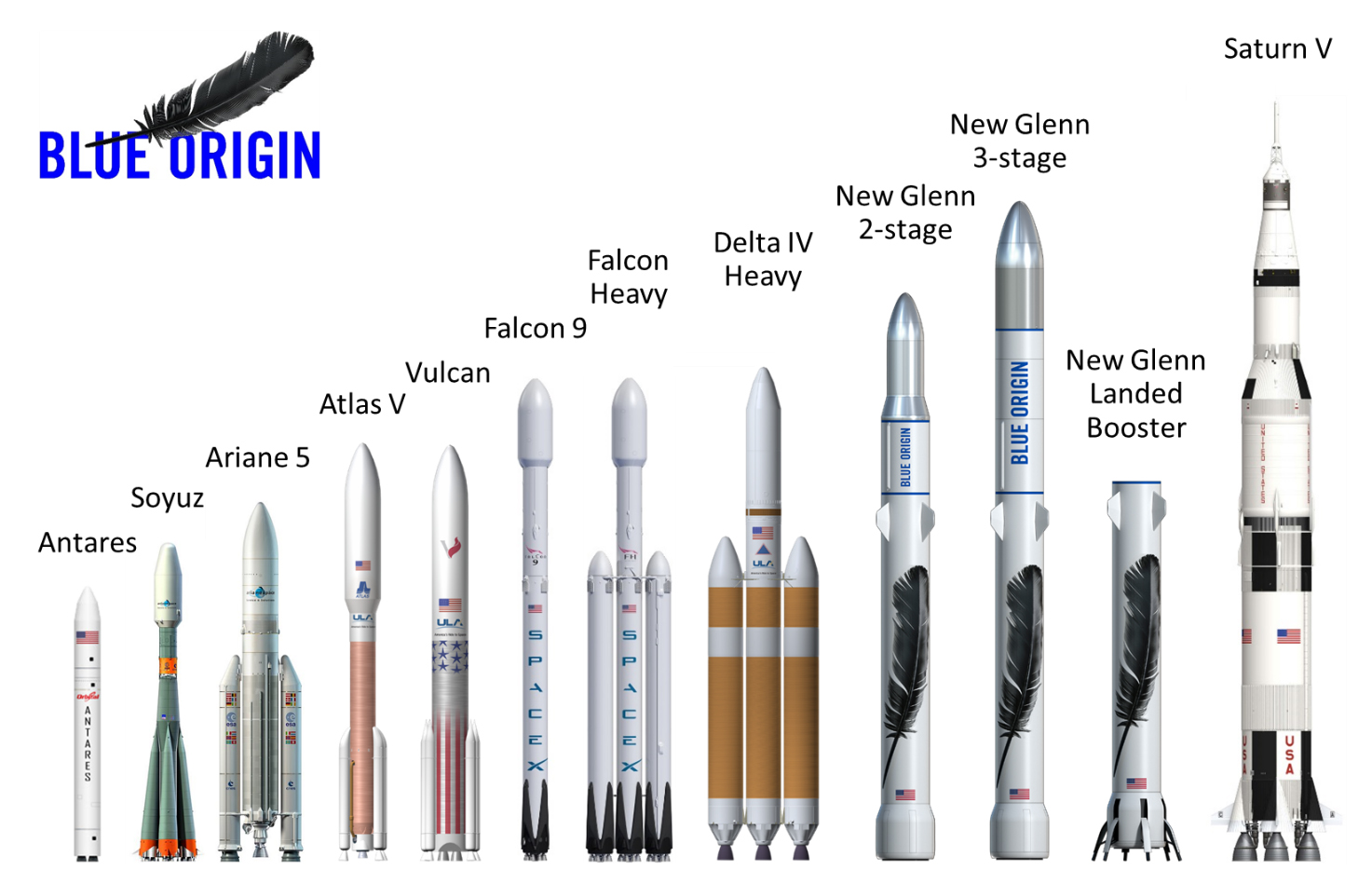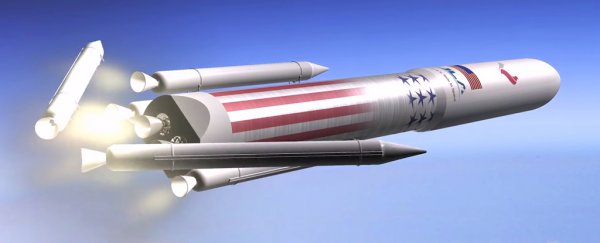SpaceX turned heads around the world on February 6 with the first-ever launch of Falcon Heavy.
The 230-foot-tall (70 metres tall) rocket's three boosters helped push Elon Musk's Tesla Roadster into space, peeled off after running low on fuel, and then careened toward Earth.
Two of the 16-story boosters rocketed to a safe landing (the third fell into the ocean), and the flight was hailed as a huge success. It proved SpaceX could lift twice as much payload to space for about 25 percent of the cost of its closest competitor while recycling rocket parts worth tens of millions of dollars.
That primary rival is United Launch Alliance, a company that aerospace industry titans Boeing and Lockheed Martin formed in 2005.
ULA's largest rocket, the Delta IV Heavy, costs US$350 million per launch, according to company CEO Tory Bruno. Delta IV Heavy is far more expensive that SpaceX's US$90 million Falcon Heavy in part because it isn't reusable.
ULA plans to retire that launcher after about seven more missions, but the company is currently developing its own reusable rocket, dubbed Vulcan, to compete with innovative companies like Musk's SpaceX and Jeff Bezos' Blue Origin.
"Vulcan will first fly in mid 2020," Bruno told Business Insider, adding that the rocket "will start at sub-US$100-million" - a 70 percent discount compared to the company's Delta IV Heavy.
Delta IV Heavy used to be the world's most powerful operational rocket. It can send nearly 32 tons (29 tonnes) of payload into low-Earth orbit - more than two standard school buses' worth of weight.
Since Bruno took the helm of ULA in 2014, the company has been developing the more powerful and partly reusable Vulcan rocket system. It's supposed to launch for the first time in mid 2020.
"Sometimes it's more than just, 'Hey my rocket's really big,'" Bruno said. "Sometimes you need the rocket to do some rather unique and exotic things after they're up in orbit."
Vulcan should lift 40 tons (36 tonnes) - nearly three school buses - into low-Earth orbit. "Vulcan is modular, so you can add solid rocket boosters to kick up its size," Bruno said.
That's less than SpaceX's Falcon Heavy, which can lift more than 70 tons (63 tonnes) - nearly five school buses - for one-fourth the price. But Bruno said there are big differences between the two systems that will make Vulcan competitive.
The key difference is the rocket's upper stage. Falcon Heavy currently uses a rocket-grade RP-1 kerosene as fuel, but it can freeze in space after a few hours. Vulcan's upper stage will use cryogenic oxygen and hydrogen, which are more resilient to the punishing temperatures of space.
ULA is also evolving its upper-stage system into what it calls ACES: the Advanced Cryogenic Evolved Stage. After deploying a spacecraft, ACES can be left in orbit for months or years and be refueled instead of being discarded as "dead flying hulks in space," Bruno said.
"That makes it practical to refuel them in space, and use them for other purposes, or simply use them as a shuttle to run down and grab a spacecraft that might be so heavy you could only get it to [low-Earth orbit], and then take it literally anywhere else in the solar system," Bruno added. "That is going to completely change how we go to space and what we do there."
"It's not just saving a little bit of money off the launch service cost," Bruno said. "This could become a transportation system that enables economic activity between here and the moon, and between the asteroids."
Vulcan will also lower ULA's launch costs by having detachable first-stage booster engines, called SMART (sensible, modular, autonomous return technology). "We would recover about two-thirds the cost of that first-stage booster every single time we fly with no performance hit," Bruno said.
This is different than SpaceX's boosters, which return in one piece and conserve fuel to rocket to a landing. But payloads are sometimes too heavy and need every last drop of propellant to reach their destination in space - so some boosters inevitably get discarded despite being reusable.
"How might you, perhaps, not save the entire value of the booster, but get to save [most of] it every single time?" Bruno said. "The most expensive thing on the booster is the rocket engine. In fact, two-thirds of the cost of a booster is just that one part."
Once the SMART engine package detaches, it will inflate an aeroshell to help orient it for a high-speed reentry. The shell will also insulate the engines from the intense heat generated by ploughing through Earth's atmosphere at thousands of miles per hour.
A slender parachute will then float SMART toward the ground. But it will get some help: using a technique pioneered in the 1960s, it will be snagged from above by a large helicopter.
"When I first heard about it, it seemed like a very strange almost laughable concept, until you actually start to look into the history of mid-flight capture and realise that it's actually a very genius way to do it, to reuse and capture the engines without exposing them to any sort of harsh environments like saltwater," Jeremy Braunagel, a project engineer at ULA who works on Vulcan, said in a video.
ACES should be ready to debut in 2023 or 2024, Bruno said, with SMART following sometime after that.
Although small satellites are getting smaller, big satellites always seem to get bigger and need to go farther in space. ULA is banking primarily on those big satellites for its Vulcan business.
"We've never seen a time when the customer has asked for less lift. That's kind of why we took this strategy," Bruno said, adding that flying the entire booster back could become harder and harder.
According to Bruno, Delta IV Heavy will retire in "the early 2020s" after launching once or twice a year through that time. That leaves a huge opening for Falcon Heavy, especially since Musk said SpaceX is working on its own cryogenic upper-stage (which may compete with ACES).
Musk has said he'd eat his hat "with a side of mustard if [Vulcan] flies a national security spacecraft before 2023."
SpaceX is also pouring an increasingly large share of its resources into developing a 348-foot-tall (106 metres tall), interplanetary launch system called the "Big Falcon Rocket" or BFR.
 (Blue Origin)
(Blue Origin)
Musk expects to debut the spaceship portion in 2020 and possibly launch toward Mars in 2022.Meanwhile, Amazon billionaire Jeff Bezos' aerospace company, Blue Origin, is quietly developing and building its own huge, reusable rocket system, called New Glenn.
The future of rockets is looking increasingly exciting, innovative, and crowded. It remains to be seen if ULA and Blue Origin can keep up with the breakneck pace of SpaceX, or carve their own niche in what is indisputably a new space race.
This article was originally published by Business Insider.
More from Business Insider:
